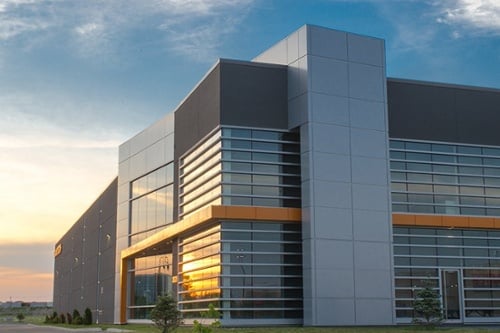To ensure the integrity of your pallet rack systems, it’s essential to understand the various types of damage found on racks and their components. If you’ve seen damage in your warehouse, you might wonder: is it bad? How bad?
Pallet rack damage priority classification and prioritization
Racking damage classification is necessary to ensure that rack damage and issues identified during inspections are appropriately addressed to prevent any opportunity for racking failure. The following is a brief review of the different damage priorities and a classification system used to communicate findings after a baseline audit or rack inspection.
Remember that this information should be used as supplemental guidance, as tolerance for damage or risk varies from company to company. It is certainly not intended to replace the advice of a professional rack specialist or engineer.
A holistic approach to rack inspections
When conducting inspections, one must look at the racking systems as a whole. Damage is rarely an isolated issue because racks are systems with various components that all rely on each other to support stored merchandise. Consequently, one must consider the height, the load capacity, the types of loads stored, the warehouse environment, the floor on which it stands, etc. If you think the damage may be critical or you have doubts about its severity, it’s always best to unload this part of the rack and speak to a racking specialist or a qualified engineer.
Rack damage weakens the entire structure and can pose serious safety concerns and hazards
If the rack hasn’t collapsed, it doesn’t mean the damage is not significant or that it won’t happen! At worst, rack failure can lead to a partial or full collapse of the pallet racking system, resulting in falling objects and stored merchandise, damage to the property, or serious injury to workers.
Understanding issue priority levels and rack damage classification
There are several ways of classifying or prioritizing rack damage. Here are three examples:
| |
BY PRIORITY LEVEL
|
BY SEVERITY
|
BY COLOR
|
| Level 1 |
Low | Minor |
Green |
| Level 2 |
Medium | Moderate |
Yellow |
| Level 3 |
High | Severe |
Red |
Rack damage priority levels used by rack engineers
When Damotech's surveyors assess damaged racks, they use the following to prioritize what they've found:
Unload: Severe damage requiring immediate unloading of the rack (bay)
High priority: Address this damage as soon as possible
Medium priority: Address promptly (6 to 12 months)
Low priority: Report and watch during subsequent inspections
Emphasis should be placed on inspecting racks regularly and reporting all damage.
Rack damage classification methods
The method you choose to label them is up to you as long as the damage is being addressed. If you are trying to promote safety within your warehouse, and have been emphasizing incident reporting, make 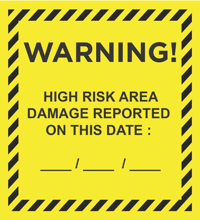 sure to respond quickly when damage is reported. Cordon off the affected area, unload if necessary, investigate the incident, and repair or replace the damaged component.
sure to respond quickly when damage is reported. Cordon off the affected area, unload if necessary, investigate the incident, and repair or replace the damaged component.
Any location deemed a high priority should be locked out to ensure that the rack is no longer supporting loads and to avoid the potential for collapse. A label or tape can be placed on the front of each damaged upright with a date. Extra caution should be used when placing or removing pallets near these locations.
Examples of pallet rack damage and issues found during an inspection
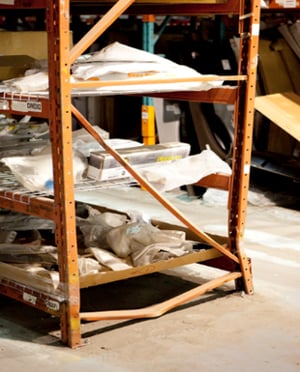
|
Damage to horizontal & diagonal rack braces
|
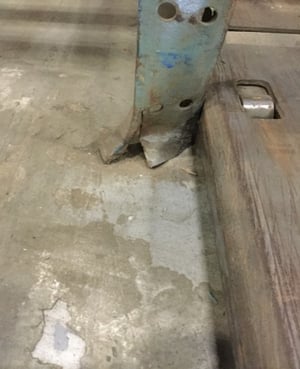
|
Damage to upright base plates
|
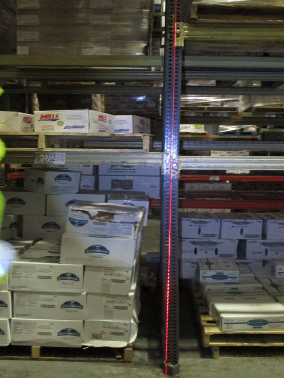
|
Out-of-plumb / Out-of-straight
|
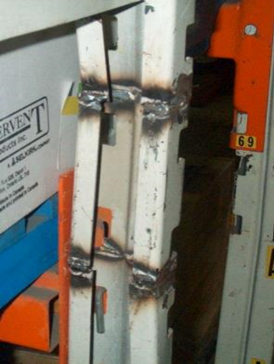
|
Welded rack repairs
|
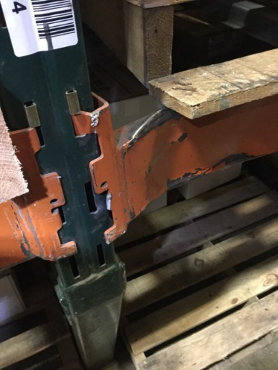
|
Damaged rack beam connectors
|
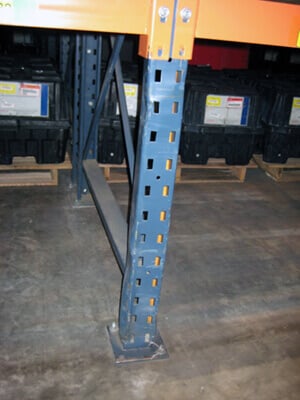
|
Rack column damage from impacts by forklifts blades or outriggers
|

|
Missing or damaged rack anchors
|

|
Rack column shims
|

|
Damaged or twisted rack columns
|
Other considerations regarding rack damage prioritization and classification
Some damage may not look “critical.” However, it can still lead to extraordinary consequences, especially if left unaddressed for a long time or if damage accumulates in the same upright location. These sorts of issues can seem small and sometimes hard to see, but they still need to be tended to. Additionally, a combination of several “low priority” damages on a rack system can lead to a high priority. If an issue on your pallet rack has been identified, appropriate action should be taken to remediate it.
Finally, whichever classification system you choose to prioritize rack damage, do make sure that it is documented, labeled, and tended to in a reasonable amount of time.

Frequently Asked Questions: Pallet Rack Damage Priority Classification
Why is pallet rack damage classification important?

How does rack damage affect warehouse safety?

What are the typical rack damage priority levels used by engineers?

Rack inspectors commonly classify damage using three or four urgency levels:
- Unload (Critical): Severe damage requiring immediate unloading and isolation.
- High Priority: Must be repaired or replaced as soon as possible.
- Medium Priority: Should be corrected within 6–12 months.
- Low Priority: Monitor and document during future inspections.
This approach ensures that dangerous conditions are locked out and that all damage is tracked correctly.
How can rack damage be documented and labeled?

What are common types of pallet rack damage identified during inspections?

According to field data and ANSI MH16.1-2023, frequent issues include:
- Bent or missing braces
- Damaged or missing base plates
- Out-of-plumb uprights (exceeding 1/2" per 10 ft, ANSI § 4.10.1)
- Improper or unapproved field repairs
- Bent beams or missing safety pins
- Twisted or dented columns from forklift impact
- Missing or sheared anchors (violating anchoring rules § 11.3)
- Shims exceeding six times the anchor-bolt diameter (§ 11.2)
Each condition reduces the system’s structural capacity and must be repaired or replaced to restore compliance.
What should I do if rack damage looks severe or uncertain?

Can multiple minor damages become a significant issue?

How often should pallet racks be inspected?

What’s the best way to manage rack repair and follow-up?

How can Damotech help with rack damage assessment and compliance?


